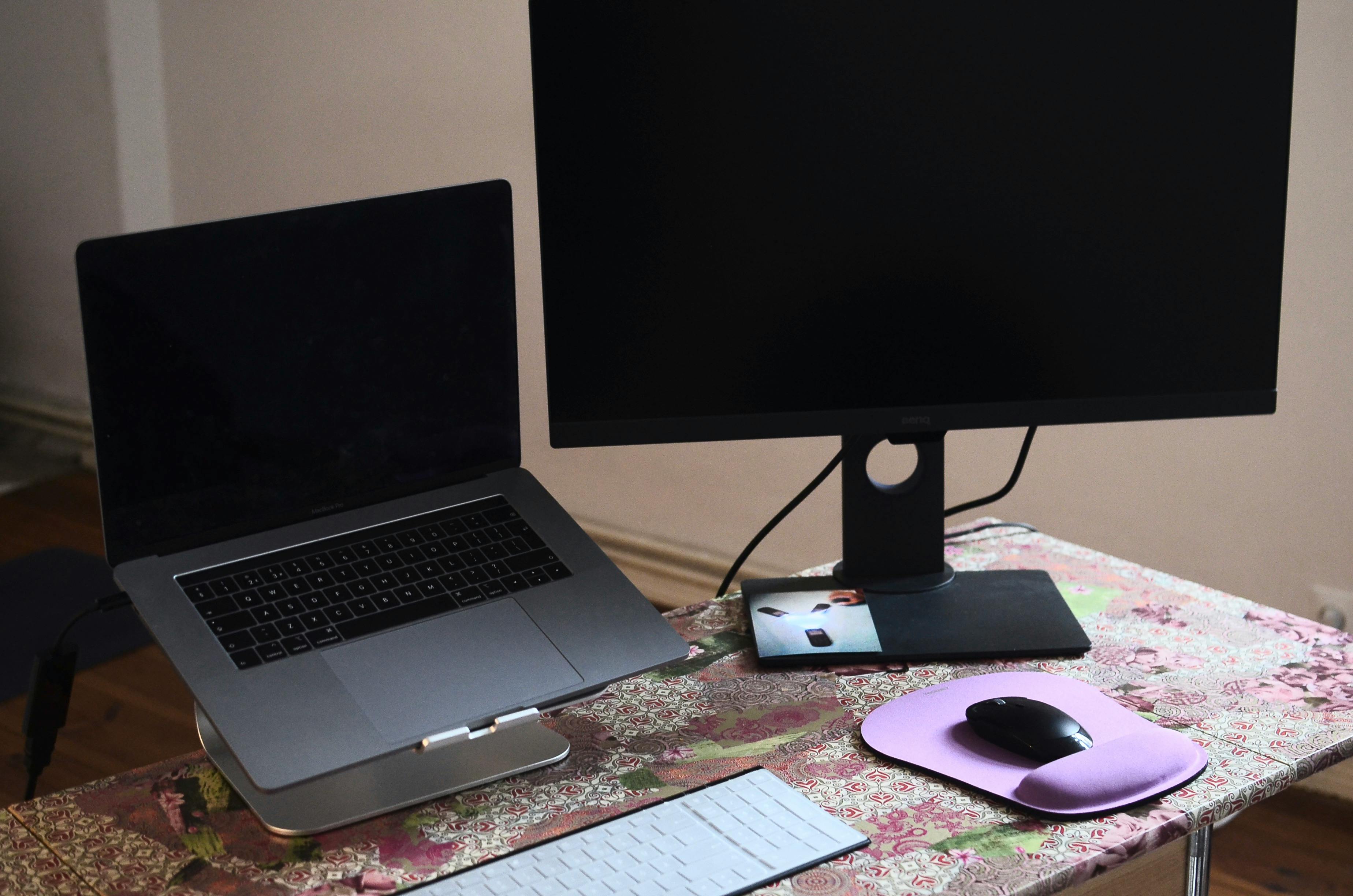



Laptops are designed for portability, not posture. When the screen sits too low, as it does by default, your head and neck are often pulled forward to see the screen clearly. This forward head posture, often called "tech neck", shifts your head's weight in front of your spine, increasing the load on the cervical discs, facet joints, and posterior neck muscles like the levator scapulae and upper trapezius.
Over time, this can create sustained tension through the upper back, contribute to stiffness in the thoracic spine, and even affect breathing patterns and shoulder mechanics. Raising your laptop screen to eye level with a stand helps bring your head back into alignment with your torso, reducing the demand on muscles that would otherwise be working overtime just to hold your posture.
Here’s how to raise your laptop effectively.
When you raise your laptop, the keyboard and trackpad will likely become too high for comfortable use. Pair your setup with an external keyboard and mouse to maintain a neutral wrist position and reduce strain on your arms and shoulders. Position the keyboard and mouse so your elbows form a 90-degree angle while your forearms remain parallel to the desk.
By elevating your laptop, you’ll align your head and neck with your screen, which reduces the load on your cervical spine by up to 10 pounds per inch of forward tilt. This simple adjustment promotes better posture, prevents strain-related injuries, and keeps you more comfortable during extended work sessions.
Choose any of these methods to raise your laptop and create a healthier workplace.